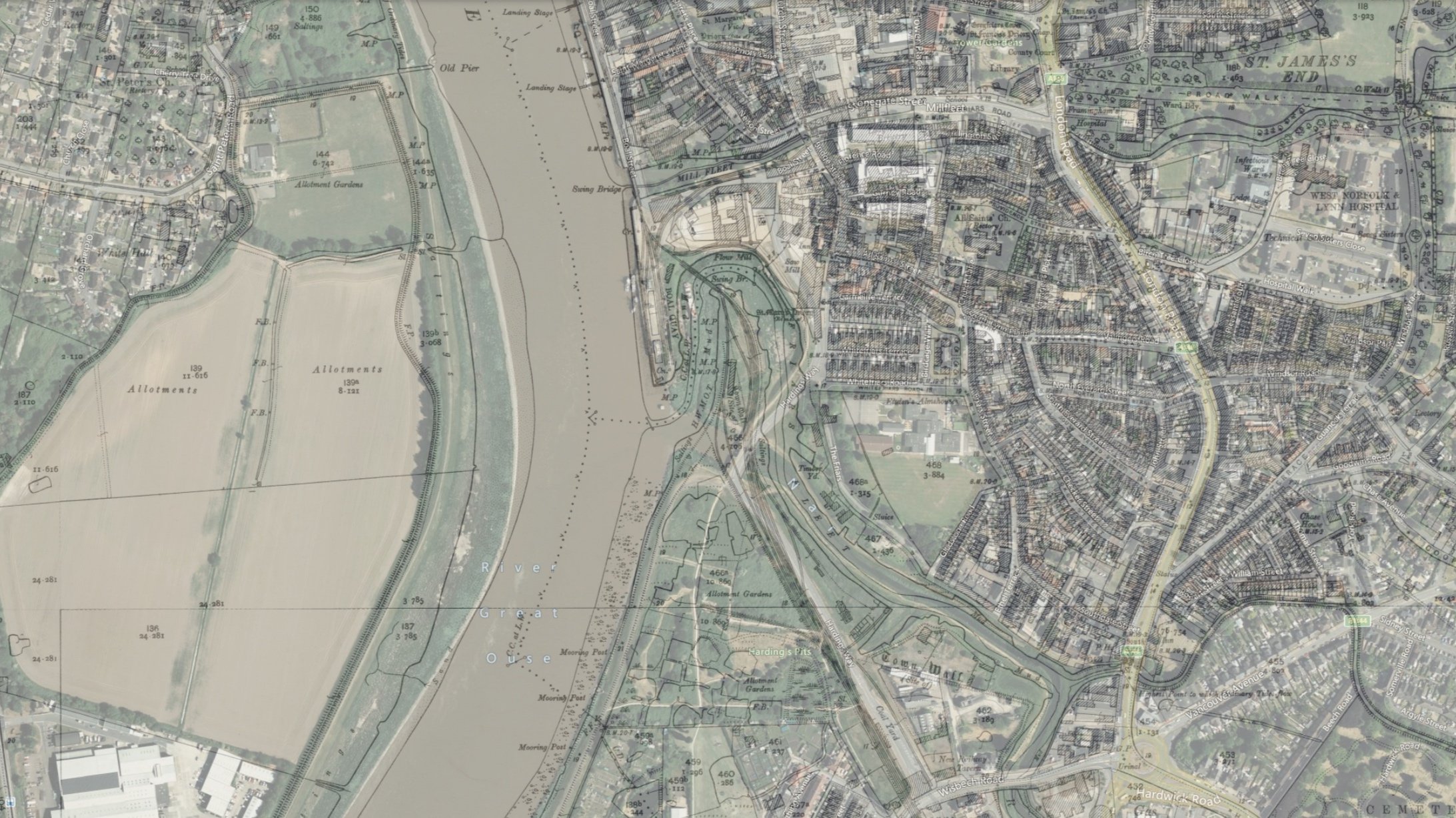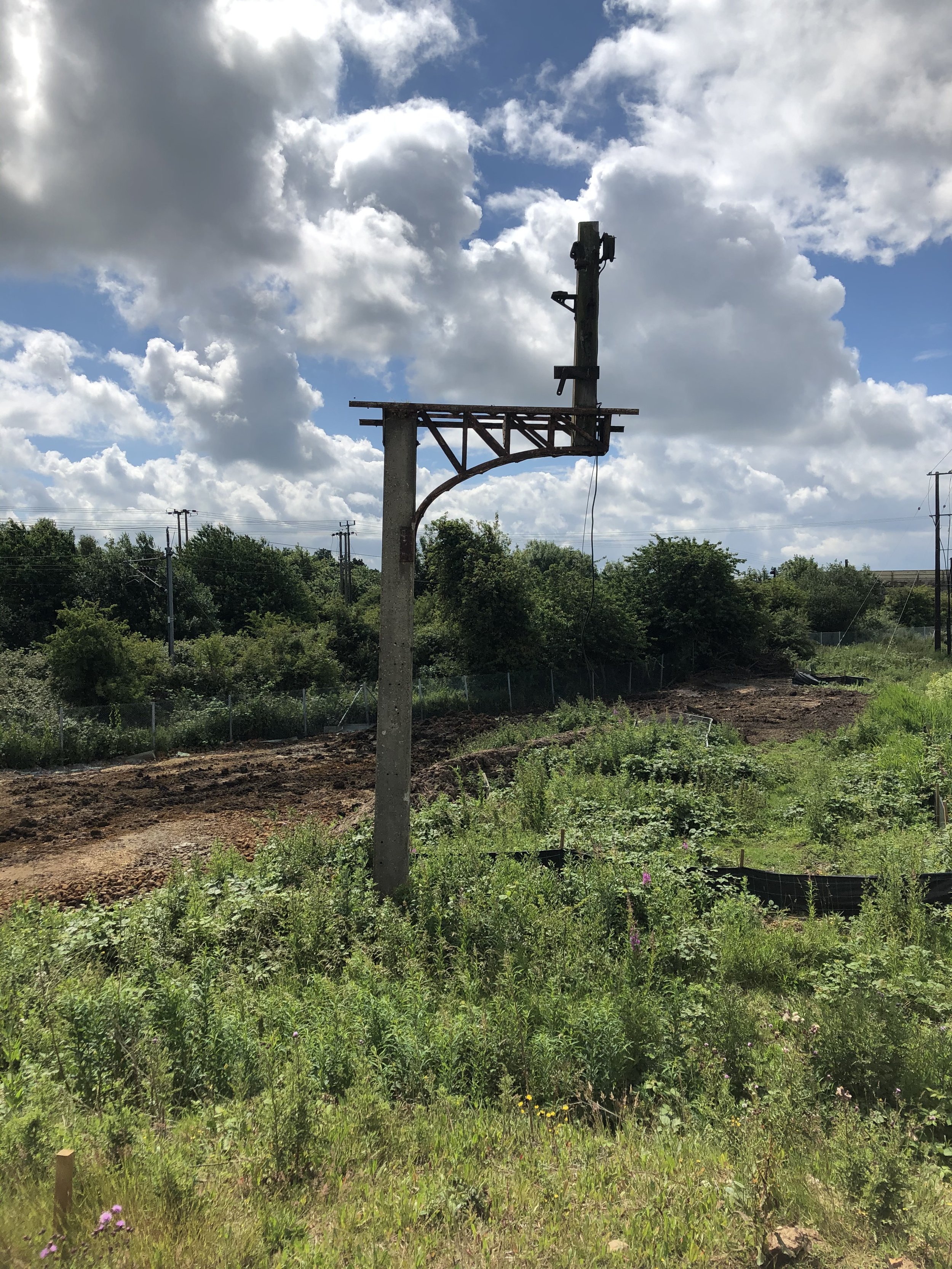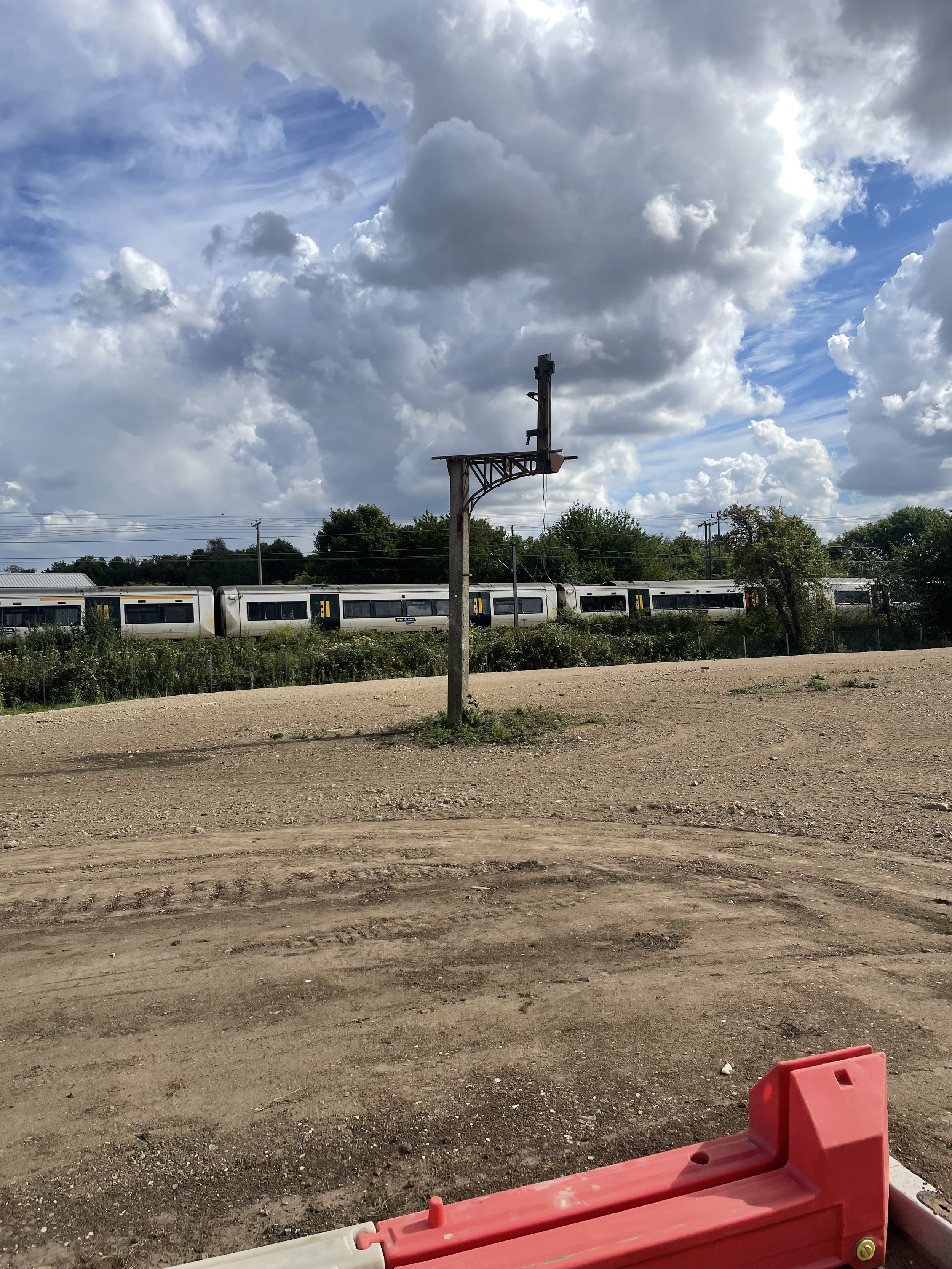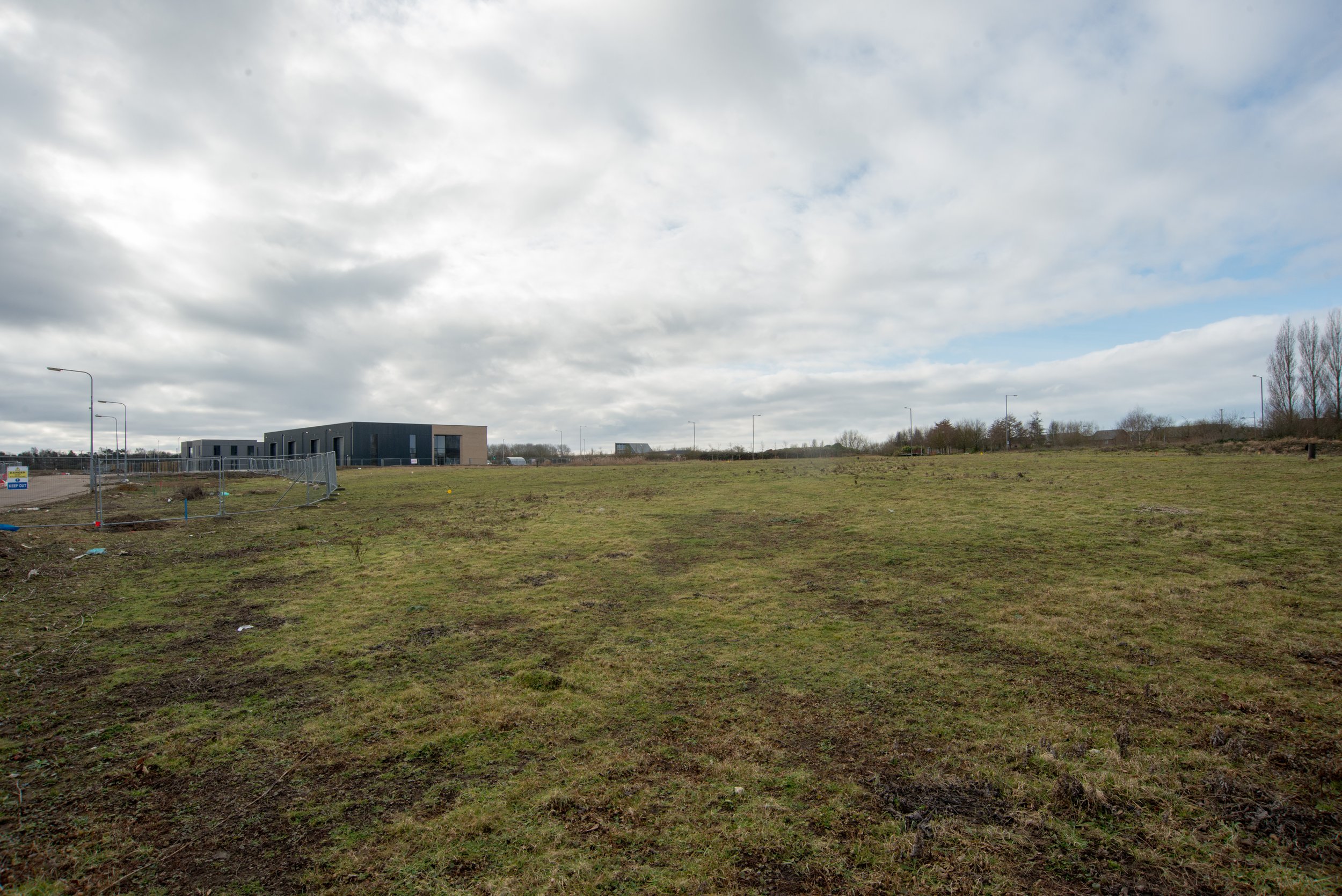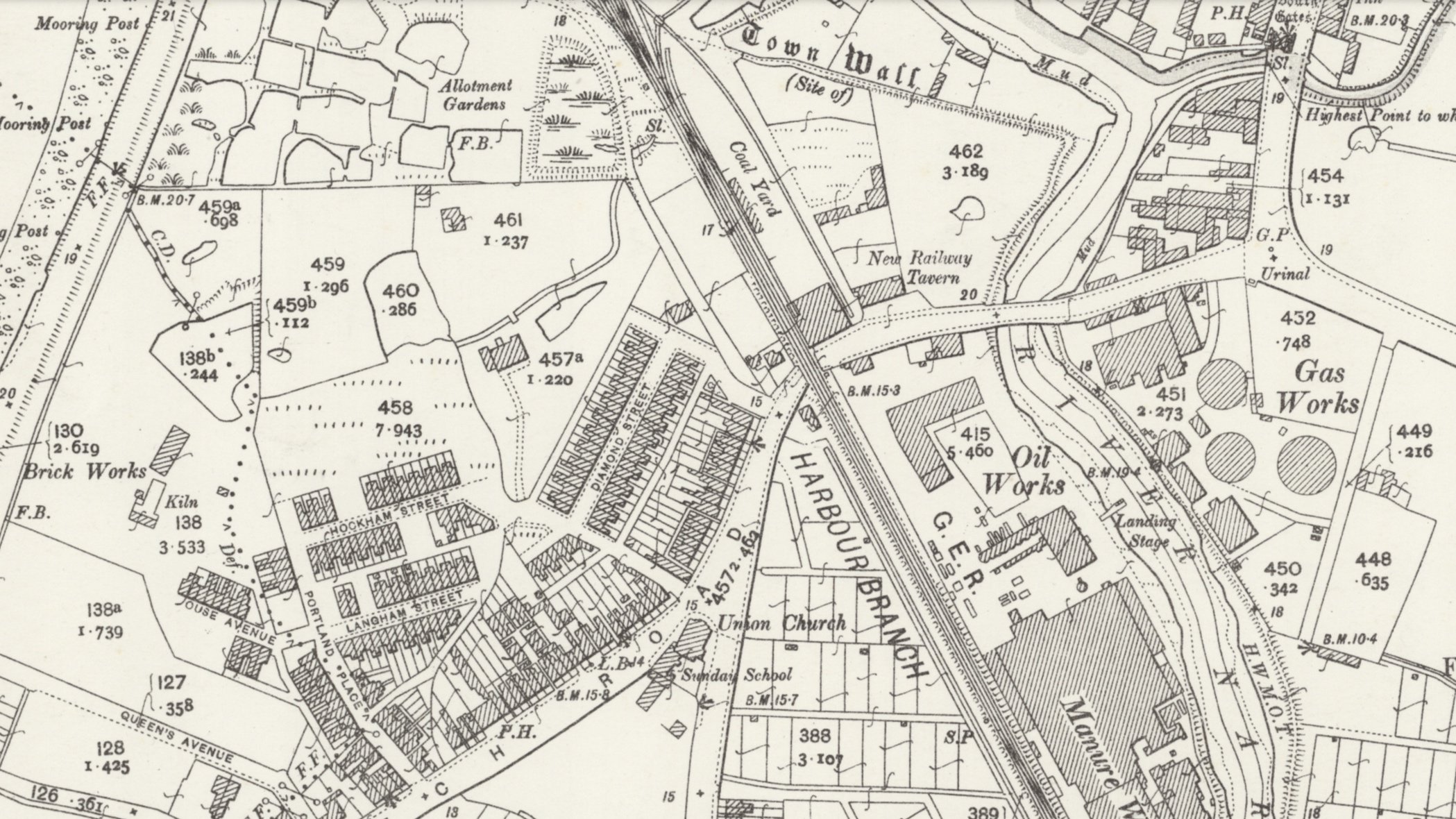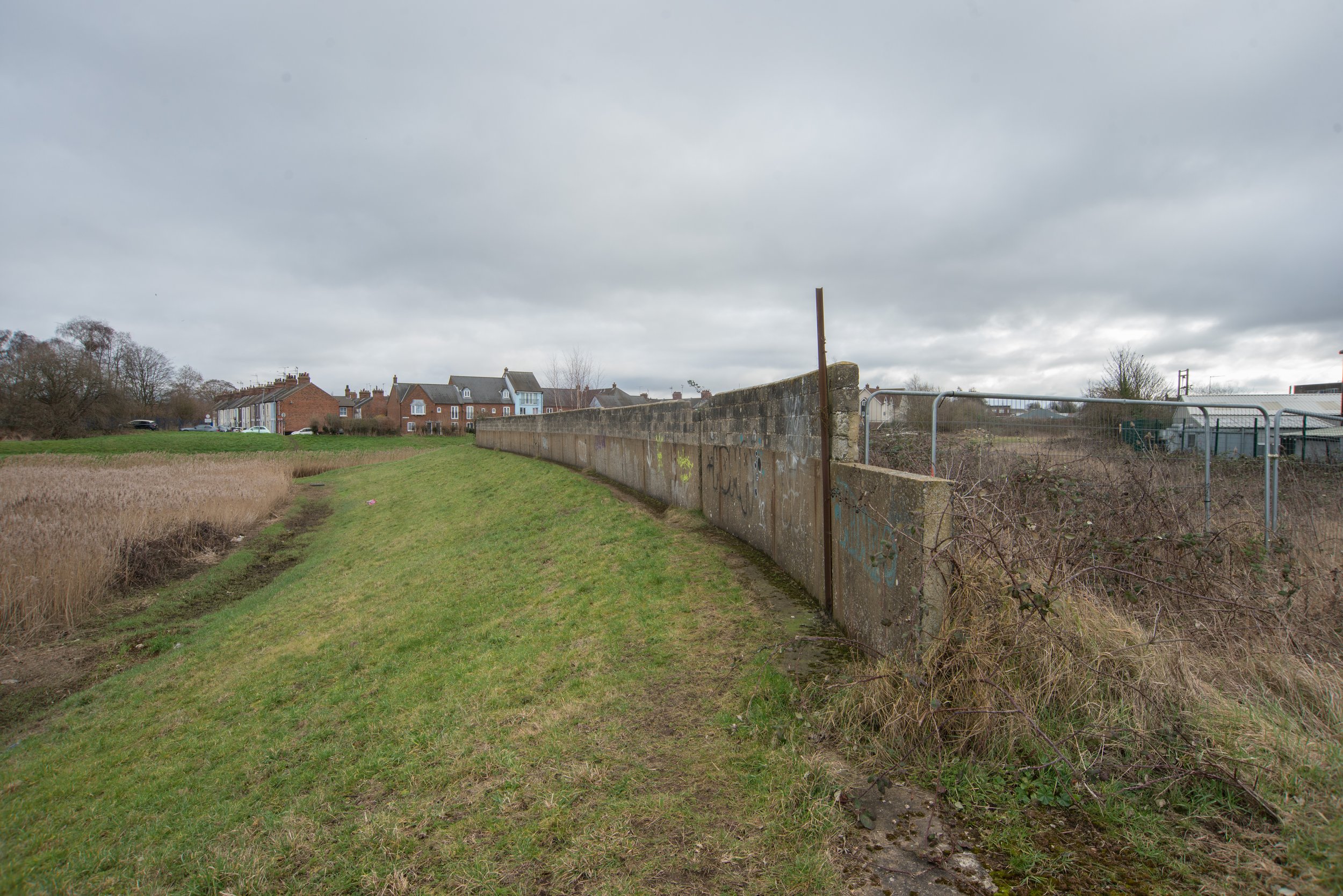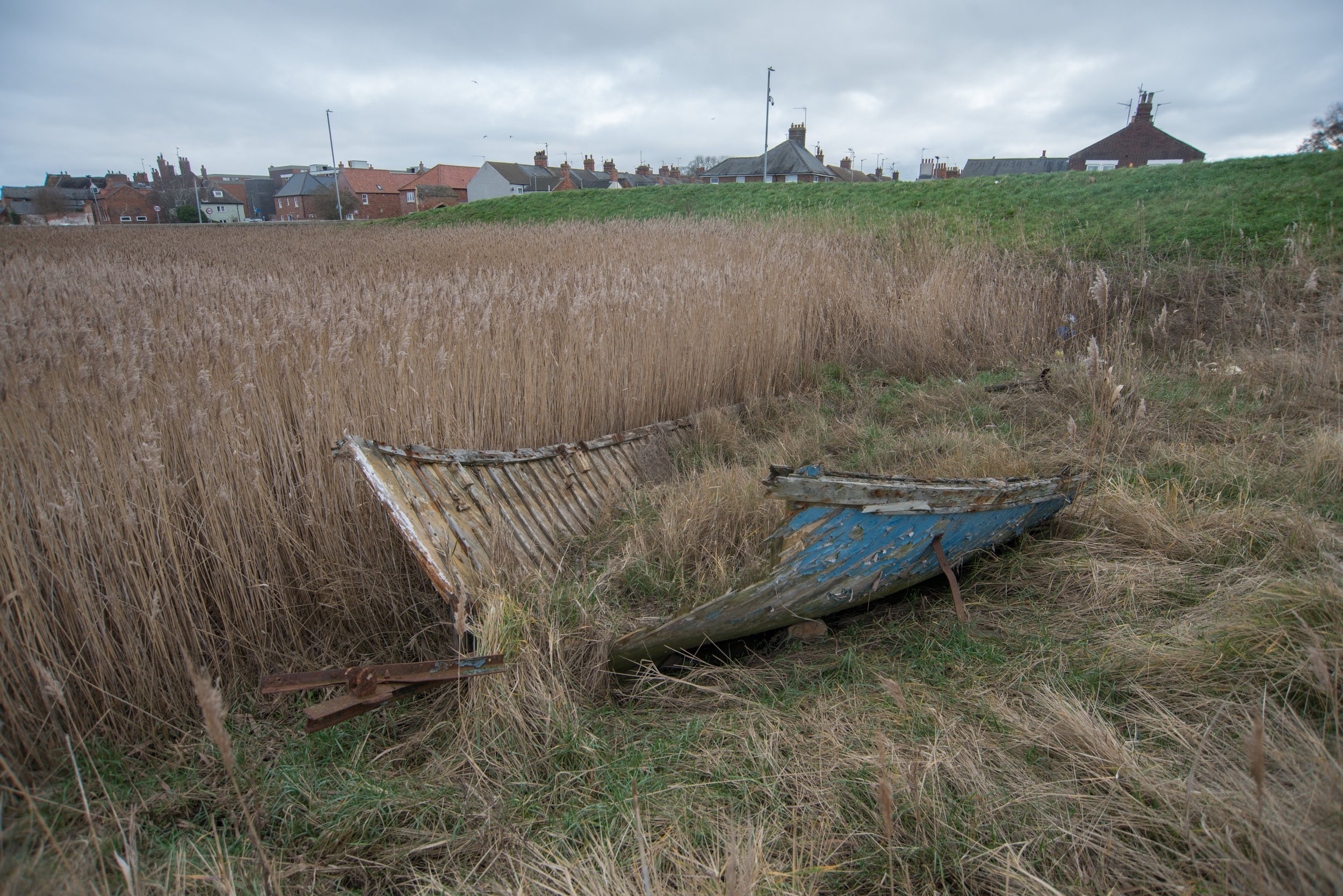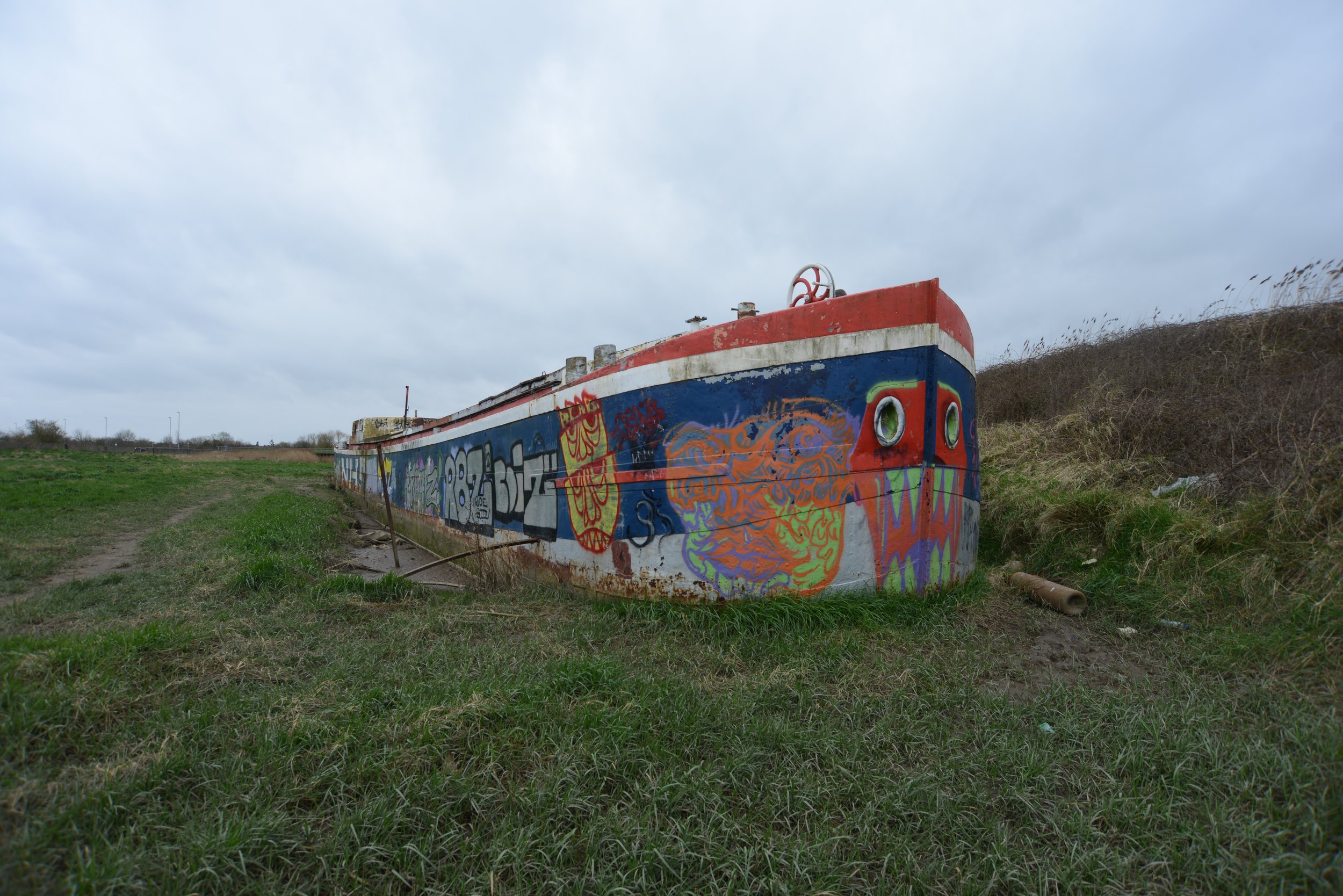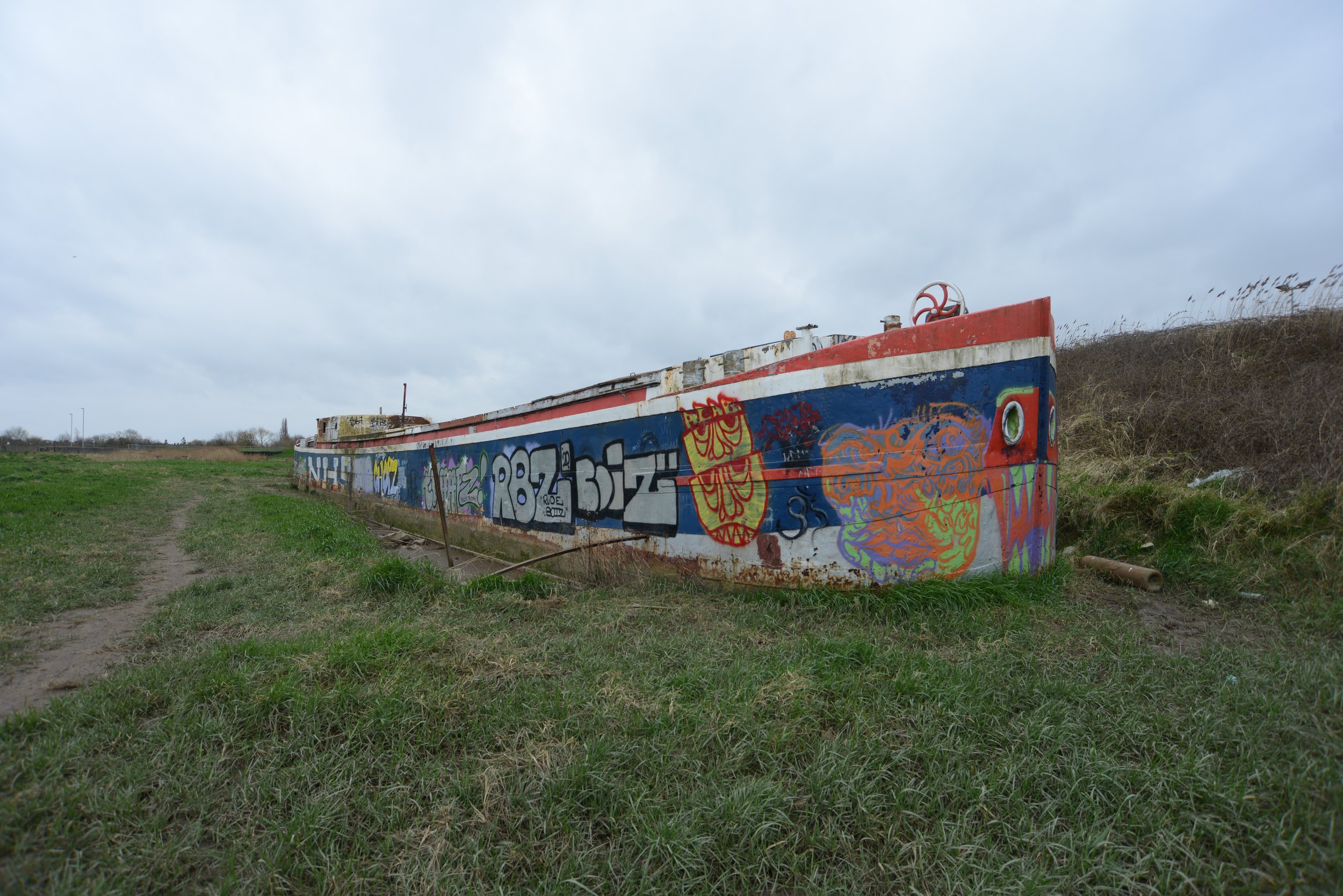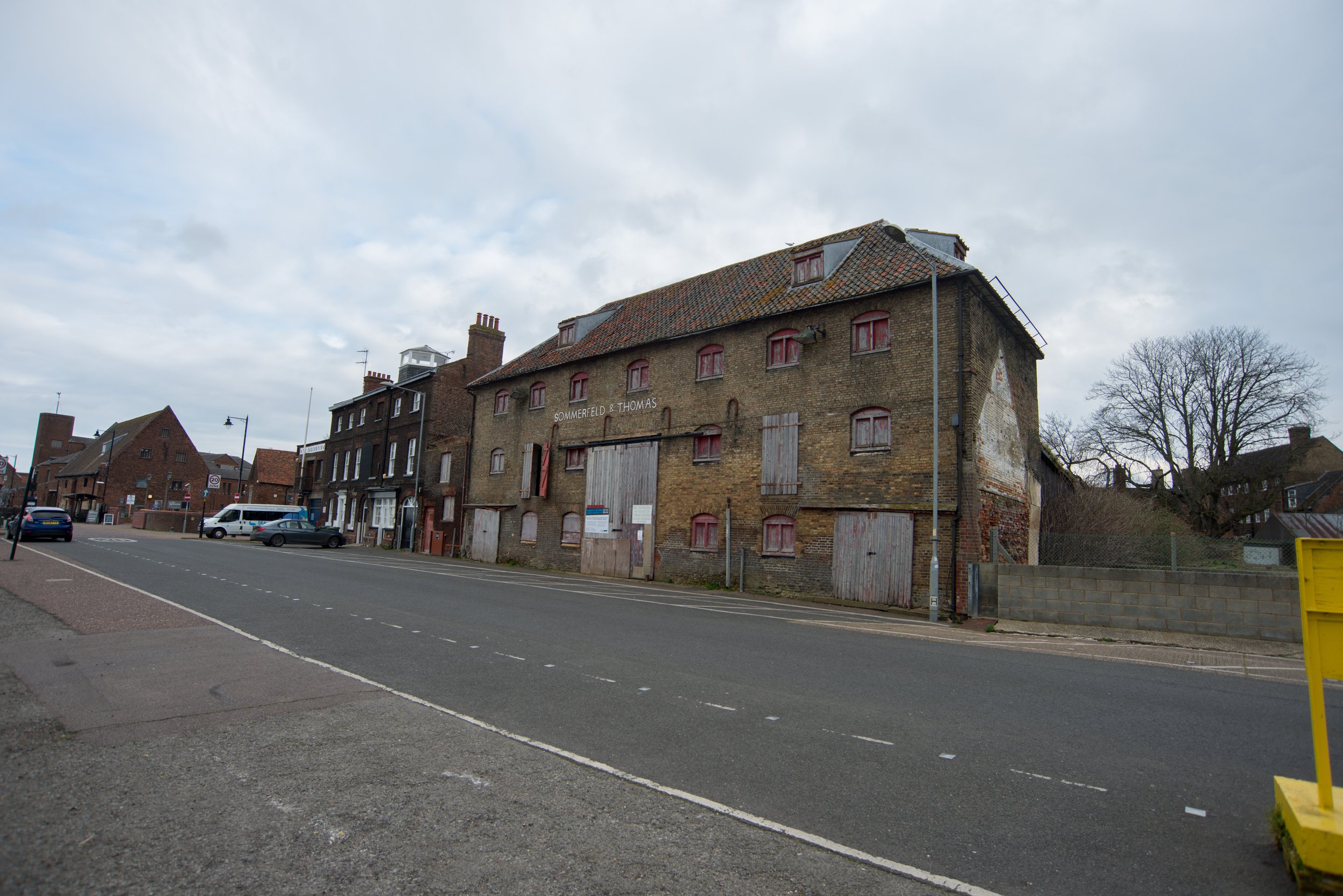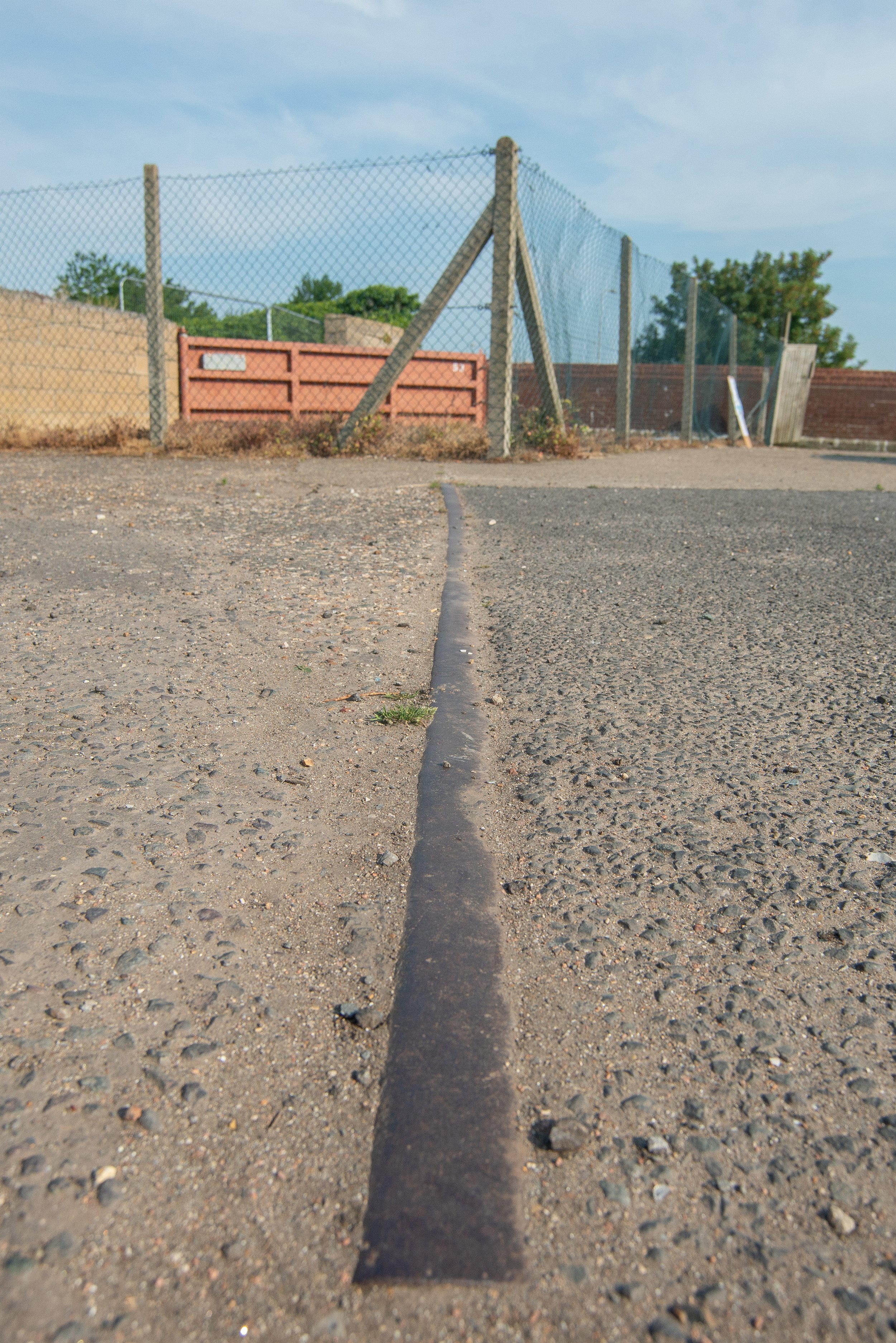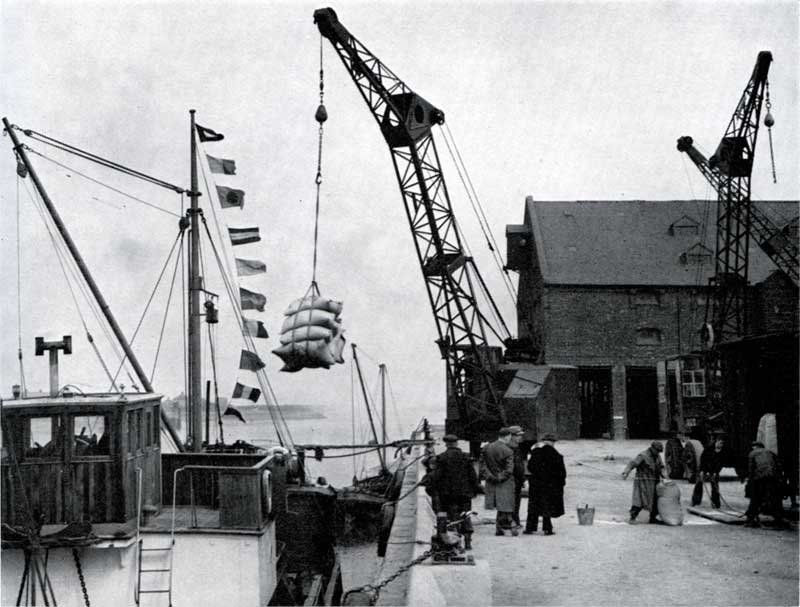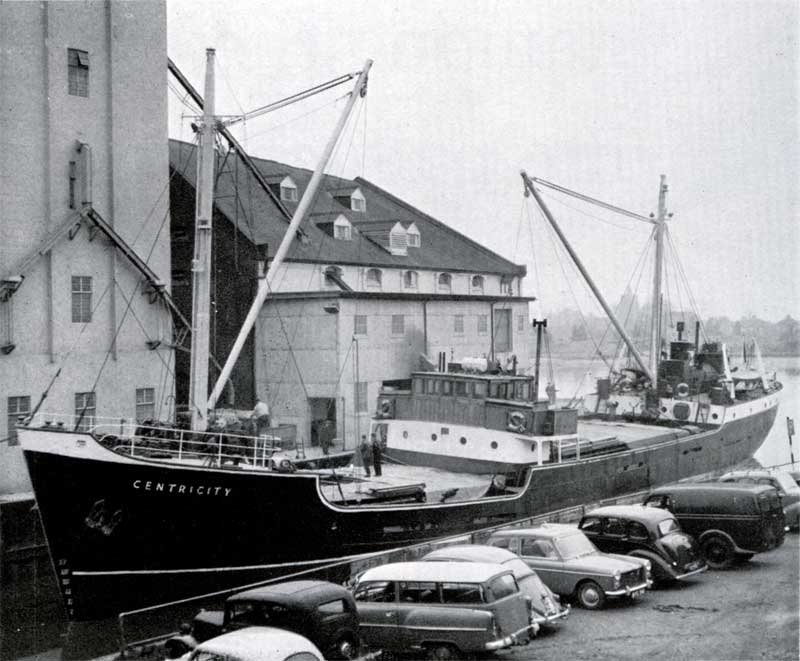
We recommend viewing this page on a desktop pc or tablet for a better viewing experience.
KING’S LYNN HARBOUR RAILWAY
Welcome to the Norfolks disused railways page. Here, you can learn about the first railway line in King's Lynn that served the River Ouse. Additionally, the Docks branch line ran from King's Lynn Junction, located close to the central station in King's Lynn town centre; this line was built sometime after the harbour railway.
The King's Lynn Harbour railway line ran from the Harbour junction, coming off the Cambridge main line and running North Westwards towards the South Quay in King's Lynn.
The junction is located 1 mile and 47 chains south of King's Lynn central station, near where the M&GN South Lynn station once sat, and was also connected by a shuttle line linking the M&GN and the Lynn-Ely-Cambridge line.
You can find more information about this on our website.
South Lynn Bridges and Harbour junction.
The railway line commenced operations in 1849 and was eventually expanded to the South Quay up to King's Staithe in 1855. A further extension to the Boal Quay was opened in 1857. However, the railway line ceased operations in 1968, and the tracks were removed shortly after its closure.
From what I have found, the only remains of any railway track I could see were at the south quay.
I found some information online stating that there used to be a bridge at South Lynn that remained even after the railway closed but has now been demolished.
I have also been informed that there were once remnants of the previous railway line on the demolished bridge spanning the Nar River.
From what I can see, the bridge was still there in the late 90s and was nicknamed the Casey jones bridge.
Thanks to Lewis Collard’s page for all the information.
There was a 36-frame Saxby signal box in charge at the Harbour junction, directing the railway lines leading to both the M&GN South Lynn station and the Harbour railway.
The only remnants of the junction are the semaphore signal and a small portion of the points from the Campbells branch, located just north of where the junction once existed. Additionally, a small part of the shuttle branch points can still be seen by the main line and from the A47, along with the points from the Campbells sidings. A short section of the track remains from the shuttle branch and can be viewed on a specific webpage (link provided below). The signal box was removed in the mid-80s, and the London to Cambridge line was electrified in the early 90s, resulting in the removal of the double line.
South Lynn bridges & Harbour junction
MAPS
Map coverage from the Harbour Railway with 50/50 coverage from historical maps and also modern maps.
Thanks to the National Library of Scotland.
Harbour Junction
The historic map below shows Harbour Junction before the construction of the Lynn Avoiding line between Bawsey and South Lynn.
"South Lynn & the Muck Works."
King's Lynn Quay
South Lynn Harbour Junction
I want to express my gratitude to Tony Watson, who allowed me to add his photos to this website via the Midland & Great Northern Joint Railway M&GN Facebook page. I am thankful to Tony for generously sharing these photos of Harbour Junction with me.
In this photograph, the Harbour line leading to King's Lynn Quay can be seen on the left side. The semaphore signal for the harbour line is also visible in the picture, which can be found in King's Lynn today (seen further down the page). On the right side of the photo, there is a small siding and a line that previously served the now-defunct Campbell's factory in King's Lynn. Some parts of the points still exist off the main line. Additionally, the line is still doubled in this picture, but it has since been converted to a single track after the electrification of the main line from King's Lynn to Cambridge.
Harbour Junction layout (early 1980’s)
The Harbour Branch Semaphore signal.
Thanks to Tony Watson, we have access to a photograph depicting the operational period of this signal.
Tony has informed us,
“The signal Originally had 2 signal arms, this was its final guise with 1 arm in the late 70’s early 80’s.”
Credit Tony Watson
In 2020, while tracing the bridges of South Lynn, I discovered a long-lost marvel from the Harbour branch, situated just outside the Nar Valley construction site.
This antique semaphore signal was abandoned shortly after the former Harbour junction, near the former signal box.
The photograph was taken in 2020, and at the time of writing this page in 2023, the signal remains. However, due to ongoing construction along the line, its future is uncertain.
We sincerely hope that this historical artifact will be preserved as a memorial. This initiative was spearheaded by a Facebook group.
The South Lynn M&GN Railway Heritage Group
In 2024, I revisited the site where the old signal still sits in the Nar Valley to see that the signal is still in place and has hopefully been kept as a memorial.
In 2025, I went back to the Nar Valley commercial park where the old signal still stands. I had a new drone with me, so I could take some fresh photos of the old signal.
The site has said to have been designated as a protected monument of historical significance by King’s Lynn Borough Council.
Thanks lots Richard woods.
After the signal post, the railway beared round before heading straight towards the River Ouse and the South Quay, going past the manure works and crossing over an old wood and steel-made bridge.
The empty land the railway once ran across is now being built with commercial units close to where the old signal still sits.
A new footbridge close to the A148 Nar valley way has been built Close to where the old railway bridge once sat.
The railway then crossed through where the new housing estate now sits, roughly following the Sandpiper Way road; the railway then crossed over a crossing at Wisbech Road and ran around where Hardings Road is currently situated.
After crossing Wisbech Road, the railway departed on the short final trip to the South Quay.
When I visited in 2023, the Nar Valley construction site was being constructed where the old Harbour line would have crossed after coming off the Lynn Ely line before reaching Wisbech Road level crossing.
A view of roughly where the old harbour line would have run many years back as we can see the site has now been constructed over.
Heading towards the South Quay, the railway would have crossed over the river nar over this bridge.
The bridge was given the nickname "Casey Jones" because of its American appearance.
This photo was taken in 2007 and this bridge has since been demolished.
Lewis Collard, Attribution, via Wikimedia Commons.
Thanks to Lewis for sharing this photo via Wikimedia.
Click the link below for more information about this bridge and the Harbour junction from Lewis's fantastic page.
Once the bridge was demolished, this new bridge was built roughly where the old railway bridge once stood to take pedestrians and cyclists over the river Nar.
King's Lynn Muck Works
Opened in 1872. West Norfolk Fertilisers was one of the major industrial concerns in King's Lynn in the 20th century, employing many residents, many in very specialised roles. The plant included an acid factory, tar works, laboratories, warehouses, and office buildings. The company expanded in the 1940s and 1950s but declined in the late 1960s before closing in 1967.
This site had its own railway sidings, one from the Harbour railway.
Looking at historical maps, the works also had a line into South Lynn station sidings.
The building was demolished in 2002
And now, a new housing estate is on the site, and further construction is happening on the Nar Valley project.
Historical maps showing the old railway sidings from the South Lynn works.
Thanks to the National Library of Scotland for the Use of the Historic maps used.
Historical map showing the South Lynn works railway line that entered South Lynn M&gn station.
South Lynn Muck works
Thanks to King’s Lynn Forums.
From the air, you can see the South Lynn Muck Works and the Harbor railway line running through it.
Thanks to Historic England for the aerial photo. Please click on the photo for a link to the source page.
Once the works were closed and demolished, the land sat empty for a few years until the Nar Valley project started, and this housing estate was built roughly over parts of the old works in South Lynn, with access to the estate just by where the level crossing would have been at Wisbech road.
Called Sandpiper Way.
I am standing on the newly built housing estate facing toward the Wisbech Road crossing roughly where the old line would have run many years ago.
This is the Housing estate where the old works would have roughly sat before being demolished.
After the housing estate, I came across the old crossing on Wisbech Road at South Lynn. However, when visiting in 2023, there was no trace whatsoever showing that there was once a railway crossing over here.
Early maps showing the crossing at Wisbech Road,also shown on the map is the Railway Tavern.
The Railway Tavern on Wisbech Road South Lynn was seen here before this public house was demolished in the late 1990s.
This new building replaced the old public house at Wisbech Road.
This was where the Railway Tavern once stood on Wisbech Road.
The picture seen below was taken in February 2023
Just after Wisbech Road, Just into Harding's way, I found this old wall that I don't think is railway-related; I am more convinced it's for flood defences.
Looking at old map coverage, it could have been for coal storage.
Thanks to the National Library of Scotland for the map used below.
I found the old wall just into Harding’s way and not far from where the old level crossing would have once been.
I’m guessing this would have been part of flood defences or the coal storage, as seen in the historic map above.
After crossing Wisbech Road, the railway headed towards the South Quay, following roughly where Harding's way is now built.
Hardings way took in 2022
Roughly where the railway once ran pre-1968
Just to the side of Harding's way, I saw in the distance this concrete support that looked like, Maybe, could have been part of an old bridge support.
Looking at old maps, this concrete support shows that it was not directly railway related but maybe for a road or a footpath leading to a siding.
Please feel free to get in contact if you have any ideas.
This was taken in 2022 on my first visit to the Harbour branch.
I revisited the harbour branch in 2023 and decided to pay a closer visit to this old concrete part in South Lynn to see if I could see any other remains of evidence of what this could have been.
I could not see any other evidence of what this could have been.
Please feel free to get in contact with any information.
A bridge crosses a small channel off the River Ouse on the public footpath.
Looking at old ordinance survey maps, this channel was not there in the 1888-1913 maps and was constructed later; the footbridge crossing was added and is non-railway related.
Thanks to The National Library of Scotland & Google Maps for the below-mentioned maps.
The new bridge at Harding's Way,
this part was photographed in February 2023
This bridge is not railway related and was constructed well after the closure of the railway.
After the newly built bridge, old boats remain in the overgrowth rotting away.
Harbour railway raised track bed & swing bridge
After the new bridge, I came across the railway's track bed perimeter walls still in situ when I revisited this part of the railway in February 2023.
These were the main reasons I revisited this part: when I first visited on 13,3,2022, I was still determining where the line ran into the South Quay.
Looking at the historic map seen below, we can see where the railway ran into the South Quay.
Also seen is Google map coverage of the Harbour area perimeter walls
I photographed these in February 2023 on my second visit to this site.
The King's Lynn Harbour branch railway track bed walls.
Aerial Photograph of the South Quay
The photo below shows the railway entering the South Quay at King’s Lynn, with the swing bridge and raised track beds leading to the Quay.
Thanks to Historic England for the aerial photo. Please click on the photo for a link to the source page.
At the end of the railway track, there used to be a swing bridge that carried the railway over the River Ouse Channel and onto the South Quay at King's Lynn. The swing bridges were operated manually. They were reconstructed in 1894. A photograph taken in February 2023 shows that there is no longer any evidence of the swing bridge.
Thanks to John Fielding for the permission via Twitter to use these aerial photos taken below from John's fantastic Flickr profile.
The first aerial photo shows the raised track bed still in place.
Please use the links below to see this fantastic profile and other amazing aerial images & give them a like.
I have permission to use the photos above; please do not copy this without asking.
The disused dock area at South Quay.
Down by the now dry dock, some old parts remain in the overgrowth of the docks that sat stood many years back.
Photographed in 2022
Photographed in 2023
The dry dock area leaves behind this old boat.
Photographed in 2022
Photographed in 2023
This old boat has since been demolished.
King’s Lynn South Quay
After crossing the swing bridge, the train would now enter the South Quay, the end of this short freight line that closed in 1968
The railway served the South Quay and various businesses along the River Ouse.
In March 2022, I discovered some old tracks that I initially thought were part of a railway siding. However, after examining historic maps, I realized that they are part of a travelling crane located by the side of the River Ouse.
King’s Lynn Quay Aerial
Thanks to Historic England for the aerial photo. Please click on the photo for a link to the source page.
Thanks to Historic England for the aerial photo. Please click on the photo for a link to the source page.
King’s Lynn South Quay, after long the railway closed.
Thanks to John Fielding for the permission via Twitter to use these aerial photo taken below from John's fantastic Flickr profile.
King’s Lynn South Quay Modern day
I was standing close to where the second Swing bridge would have laid, Standing close to where the sidings lay looking towards the South Quay.
Standing where the old track bed would have once laid facing towards there the sidings lay.
Just after the car is where the Swing bridge once lay.
Standing on the Quay roughly where the track bed once lay.
Facing towards the Customs House.
Disused railway track
"Thanks to a tip-off on Twitter, I found this old piece of railway track on the Quay at King’s Lynn near Devil's Alley. Historical maps indicate that it was part of a siding for the Granary."
King’s Lynn Quay's past phototgraphy
Pictures of the South Quay at Kings Lynn in different years of its life.
The years are unknown and the photographer is unknown.
Used from ©King's Lynn Forums.
The following photos have been kindly shared with permission from a Flickr account named simonslittlelocos.
All photos are credited as ©H M Littleworth, Simon’s Late Father.
I truly appreciate your permission to use these images. Please ensure that you do not reuse them without explicit consent.
Please click on each photograph below for the source page.
License All rights reserved by simonslittlelocos
License All rights reserved by simonslittlelocos
License All rights reserved by simonslittlelocos
End of the Line
Welcome to the final stop of the Harbour branch line that takes us to the South Quay in King's Lynn. It's been quite a journey, but we've finally reached our destination.
I traced this short line in March 2022 and never started putting the pictures online until early 2023.
As I looked deeper into my research on the line, I realised how much I had overlooked, notably the concrete walls in the abandoned marshland area at the south quay.
I realised that I had misjudged the location of the railway entrance at South Quay and had to return in February 2023 to take more pictures of the forgotten line.
Following the path of this forgotten railway was quite effortless since there were no parts entangled in thick vegetation or confined within private premises.
The Harbour Junction land is the only area that cannot be accessed. This is due to its location on an electrified main railway line, which understandably prohibits entry.
In the year 2023, the old signal continues to stand and is now enclosed by a fence. The South Lynn M&GN Railway Heritage Group, present on Facebook, has devised a plan to convert this signal into a heritage centre. The aim is to conserve and exhibit its past, including the installation of a history board, so that this remarkable relic can continue to exist in its original location in South Lynn.
However, now construction has stopped for this current time the signal is now free to visit.
The Quay is easily accessible, and although some old buildings remain derelict, they still stand. The Quay is still present but no longer used as the river tides have been blocked off.
At the bottom of South Quay are the customs house and other significant historical buildings.
The historical appearance of these buildings has made them a popular location for filming production teams in various TV and film productions.
I enjoyed tracing and taking photos of this forgotten railway track. However, the area is undergoing much redevelopment, and it's hard to say how long many of these remnants will survive. The railway wall is still standing near the riverbank. I can’t see that they'll be built over because of the flood risk and the solidity of the land. Sadly, they might be replaced by yet another park or recreational area. Only time will tell. I don't think they will be built over in the foreseeable future.
If anyone wants to visit some of these parts, please message or tweet me via the icon below.
Once again, thanks for reading my humble webpage. If you have any pictures you might have and would like to add, please send them through, and full credit will be given to the owner.
I want to express my sincere gratitude to Lewis Collard, the South Lynn M&GN Railway Heritage Group on Facebook, John Fielding,Tony Watson, the National Library of Scotland, Historic England,simonslittlelocos Flickr page ©H M Littleworth Simon’s late Father and King's Lynn Forums.
Thanks again









